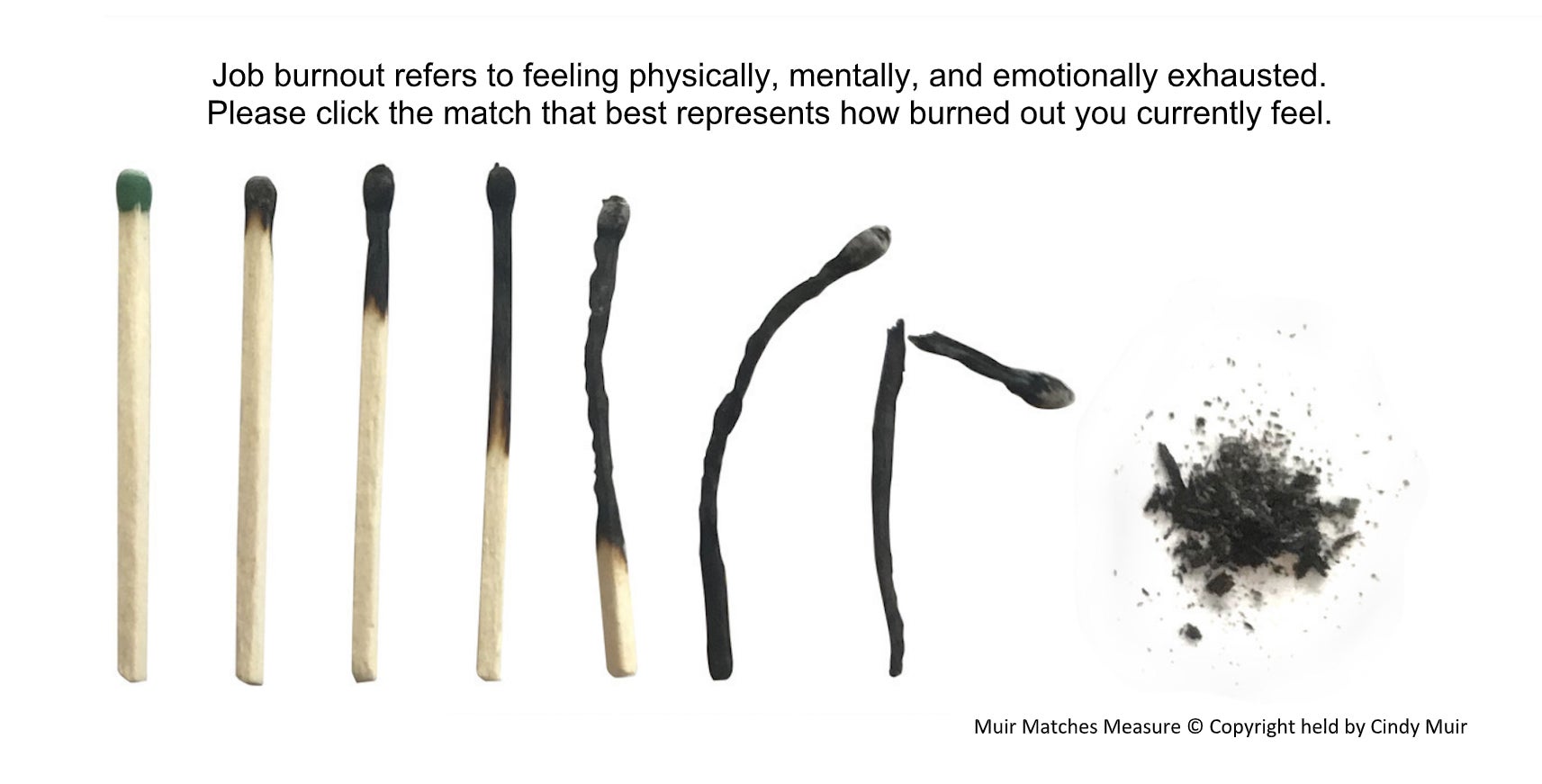This new visual tool can help assess burnout on your team
The Muir Matches Measure allows employees to point to how burnt they're feeling.

If you’ve ever been a boss tasked with talking about burnout, you might be having more conversations than ever before. One recent Workforce Institute survey finds that three-quarters of global workers now report higher expectations for how their company supports their mental health. Google searches for burnout symptoms have spiked this year, and leaders are feeling the burn themselves. But a new tool developed by researchers may just help managers and HR teams detect burnout before it becomes dire.
Consider this image: eight matchsticks are arranged in a row. Looking down the line, you’ll find each matchstick in the sequence more charred than the last. First, just the tip of the match is burnt. Three matches later, half of the stick is blackened. And by the last, it’s a match no more: it’s flamed out into a pile of ash, nothing more than powder.
This is the Matches Measure, a new visual assessment for teams to survey and assess if their workers are flaming out. In practice, HR and people leaders can present the scale to employees, who can then point out which match in the line best represents how burnt they’re feeling at work.

“Visual scales provide a way for people to more easily articulate their feelings,” write the researchers in a new paper about the tool. The measure isn’t unlike the pain scale that doctors use to ask how patients feel, or the Rorschach inkblot that psychologists use to prompt subconscious feelings from their clients. In this case, this scale measures how well people are feeling on the job. And it may be the answer to managers and people leaders looking for better ways to check in about worker burnout.
A brief history of measuring burnout
Traditionally, burnout assessments have been presented as written surveys and inventories. Developed in response to academic work on burnout dating back to the 1970s, the Maslach Burnout Inventory (or the MBI) is the first actionable assessment measuring burnout among workers. Pioneering burnout researchers Christina Maslach, Susan E. Jackson, and Michael P. Leiter introduced the MBI in 1981; it’s now in its fourth edition.
The inventory’s 22 questions lean on the World Health Organization’s official definition of burnout to tackle themes like exhaustion, cynicism, and efficacy at work. People leaders can read from the researchers themselves on how to use it effectively on the job, from identifying patterns across teams to combining findings for a bigger picture of burnout.
Since then, other assessments and inventories have been introduced as tools for workplace experts to target and measure burnout in employees. The Shirom-Melamed Burnout Measure features 14 prompts pulled from a longer list, with items like I feel like my batteries are dead to I feel incapable of being sensitive to the needs of coworkers and customers. The Oldenburg Burnout Inventory offers 16 questions to consider employee exhaustion and disengagement at work. And the US-based National Academy of Medicine has a more exhaustive list of tools for temp-checking burnout among workers.
Why images can be powerful for assessing employee burnout
While these inventories have been used by HR professionals for decades, they also feature comparatively lengthy questioning—enough to become an extensive assignment for already-strapped workers. When you’re burned out, the last thing you want is another task on your to-do list. In contrast, a visual tool is a quick, intuitive pulse, rather than a protracted exercise.
“Because the Matches Measure is a visual measure, it makes assessing burnout as quick and easy as it gets,” says Cindy Muir (Zapata), the Notre Dame management professor who developed the measure, in a release about the tool. “It eliminates one of the reasons organizations fail to assess their employees regularly: time.”
What’s more: her team’s research confirms that the Matches Measure is just as effective as these existing burnout inventories, while cutting down on that critical time investment—allowing for more quick and regular check-ins. And by relying on a visual, the tool eliminates the need for translation across countries and cultures, allowing even international companies to deploy it at scale.
With these barriers lifted, the Matches Measure could be one more tool in your team’s arsenal against burnout. It might just signal the path to a workplace with fewer flames.